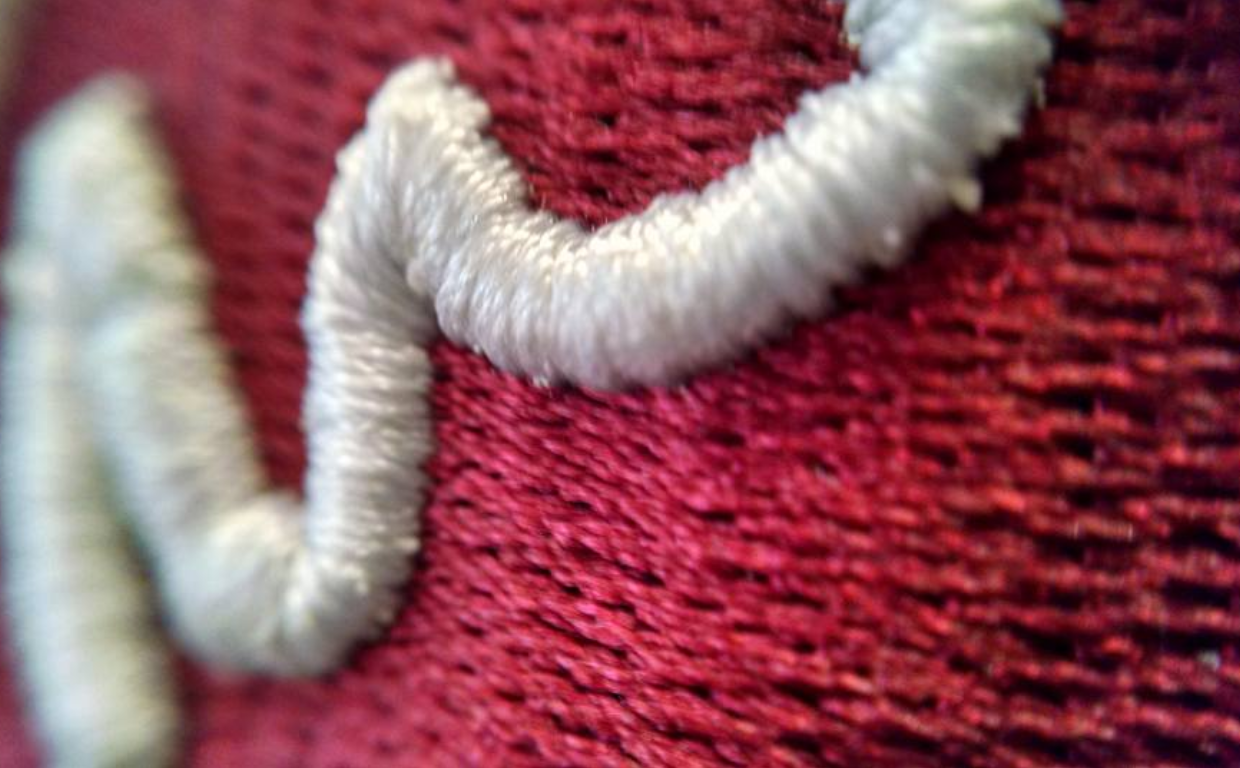Choosing the right fabric and thread is essential for executing successful 3D puff applique embroidery. These materials not only influence the design’s appearance but also determine how well the raised effect holds over time. In this blog, we explore the top fabrics and threads that are compatible with 3D puff embroidery and help achieve crisp, bold, and high-impact results.
Why Material Choice Matters in 3D Puff Embroidery
The materials used in 3D puff applique must support the extra height and density created by the foam underlay. Regular embroidery threads and thin fabrics often fail to hold the dimensional structure, resulting in flat or collapsed designs.
Fabrics like cotton twill, canvas, and denim are widely preferred due to their strong weave and resistance to distortion. These sturdy textiles help the puffed embroidery maintain its form even after repeated use and washing.
Threads must also be chosen with care. A weak thread will snap or fray under the pressure of high-density stitching. Polyester thread, known for its strength and shine, is commonly used in puff designs for its durability and flexibility.
Choosing quality supplies improves not just the look but the longevity of the product. To ensure perfection, many businesses rely on trusted digitizing experts like Mahi Digitizing’s embroidery services.
Ultimately, using the right base materials enhances both production quality and customer satisfaction, reducing issues like thread breaks, design distortion, and shrinkage.
Top Recommended Fabrics for 3D Puff Applique
Among the best fabrics for 3D puff applique, cotton twill remains a staple. It balances structure and flexibility, making it perfect for embroidery on hats, jackets, and bags.
Denim is another strong contender. Its tight weave and rugged texture provide a firm base that holds puff foam well, especially in fashion and workwear applications.
Canvas and duck cloth are ideal for items that demand long-term durability. They resist warping and are often used in accessories and heavy-duty garments.
Avoid using stretchy or slippery fabrics like silk or lycra, as they lack the structural integrity required for puff embroidery. These fabrics can lead to puckering and distortion during stitching.
To explore more on which fabric suits your project, get a quote from Mahi Digitizing for professional recommendations tailored to your design needs.
Choosing the Right Threads for Puff Designs
Thread type plays a crucial role in how well a puff design appears and lasts. Polyester embroidery thread is often preferred due to its strength, stretch resistance, and vibrant finish.
Rayon threads, though shiny, are softer and more prone to breakage. They may be used for detailed accents, but not for the dense stitching needed in puff work.
Nylon threads offer an excellent balance of durability and colorfastness. These are commonly used in outdoor gear and military patches for their water resistance.
Metallic threads can add a premium touch to puff embroidery but require experienced digitizers to prevent thread breaks. Mahi Digitizing’s custom patches service ensures correct settings are applied for complex materials.
Regardless of type, threads must be colorfast and designed to handle dense stitching without compromising thread tension or design clarity.
Compatibility Between Fabric, Foam, and Thread
Successful 3D puff embroidery requires a harmony between all materials involved. The fabric must support the foam without sagging, and the thread must glide smoothly without slicing the foam.
Stabilizers are critical in maintaining this balance. Using tear-away stabilizers helps support heavy stitching while allowing for a clean finish when removed after embroidery.
Foam thickness should match the fabric and thread density. Too thick a foam on light fabric will collapse the design; too thin a foam won’t give a strong puff effect.
Expert digitizing ensures that stitch density is optimized for the chosen thread and fabric type. Overly tight stitching can crush the foam and tear fabric, ruining the dimensional finish.
You can work with trusted providers like Mahi Digitizing’s team to receive proper guidance on matching materials for flawless execution.
Common Mistakes to Avoid with Fabric and Thread Selection
A frequent mistake is selecting stretch fabrics for puff embroidery. These distort easily under foam pressure and can cause uneven or misshapen results during wear.
Incompatible thread types can also cause problems. Cotton thread, while traditional, lacks the strength for puff embroidery and can snap under tight tension.
Incorrect needle choice leads to skipped stitches or shredded thread. A ballpoint needle won’t work well on tough fabrics like denim or canvas—use a sharp needle instead.
Foam placement errors can result in uneven height or exposed areas. This usually happens when foam isn’t cut or aligned properly beneath the design area.
By relying on experienced digitizing and embroidery teams such as Mahi Digitizing, you can avoid these pitfalls and ensure a premium, polished result for every project.
Final Thoughts: Materials Define Your Embroidery’s Impact
At the core of every successful 3D puff applique is careful material selection. Your fabric and thread choices determine how well the final design looks and holds up to real-world use.
By choosing structured fabrics and strong threads, you ensure that the puff effect maintains its visual impact. The right materials also reduce production time and design rejections.
Digitizing also plays a vital role. Your design must be engineered to work with specific materials, thread tensions, and foam thicknesses to deliver crisp results.
At Mahi Digitizing, we guide clients through every step—from fabric consultation to final patch delivery. Request a quote today for your 3D puff embroidery needs.
With the right fabric and thread combination, your designs won’t just look great—they’ll stand out as lasting, professional works of art.
Why Material Choice Matters in 3D Puff Embroidery
The materials used in 3D puff applique must support the extra height and density created by the foam underlay. Regular embroidery threads and thin fabrics often fail to hold the dimensional structure, resulting in flat or collapsed designs.
Fabrics like cotton twill, canvas, and denim are widely preferred due to their strong weave and resistance to distortion. These sturdy textiles help the puffed embroidery maintain its form even after repeated use and washing.
Threads must also be chosen with care. A weak thread will snap or fray under the pressure of high-density stitching. Polyester thread, known for its strength and shine, is commonly used in puff designs for its durability and flexibility.
Choosing quality supplies improves not just the look but the longevity of the product. To ensure perfection, many businesses rely on trusted digitizing experts like Mahi Digitizing’s embroidery services.
Ultimately, using the right base materials enhances both production quality and customer satisfaction, reducing issues like thread breaks, design distortion, and shrinkage.

